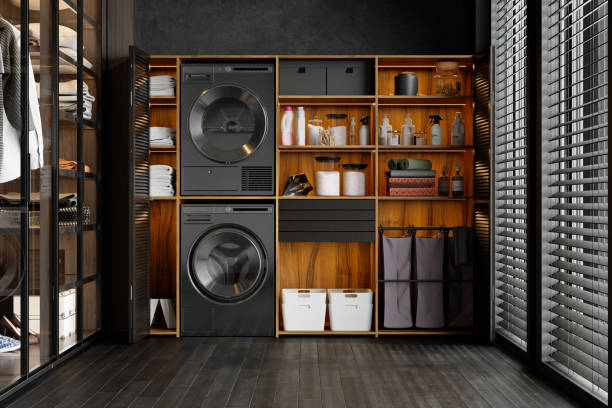
These are arguably the biggest hard workers in a washing machine. They bear all the load of the rotating wet laundry and the weight of the drum. Spoiled bearings can be heard at once: an unpleasant buzzing noise occurs, especially loud during the spin cycle.
The oil seal protects the bearings from water, which can also wear out. In this case, water will seep into the paths, and then a slow but sure death awaits them. A humming noise is a very reliable indicator. As soon as it starts to hum, get it repaired quickly. Delaying can lead to more costly consequences.
The most complicated operation described here is bearing replacement. But if you ignore the hum, you run the risk of complicating things even more.
Broken bearings cause the drum to rotate unevenly. The bearings begin to break the tank and the power element of the drum, the crosshead. There is a chance that the bearings have begun to rust due to packing wear. In this case, water from the tank will leak into the engine. Imagine the consequences.
To replace the bearings, you have to disassemble almost the entire car. The point is to remove the tank, disassemble it, and take the drum out of it.
For the job, in addition to screwdrivers, you’ll need:
– a 10-head screwdriver;
– a 14-gauge wrench or head;
– pliers;
– wire cutters;
– wiring ties (polypropylene ties);
– Simple silicone sealant (not glue!).
Gloves and a flashlight are also very helpful.
Unplug the plug from the outlet. Remove the back panel and disconnect the wires going to the motor and heater. Remove all the fasteners that secure the wires to the tank, and cut the clamps with wire cutters. The tank itself hangs on two springs and is supported from below by two shock absorbers.
Most likely you have a direct-drive car. So, you’ll have to remove the washer motor. Unscrew the central screw, holding the drum with your hand.
Be careful not to cut yourself on the edge of the housing. Remove the rotor (moving part of the motor), then unscrew and remove the stator (respectively, the fixed part).
Around the hatch, where the laundry is loaded, there is a large elastic collar. It is encircled by a collar with a spring. Locate this spring and, by hooking it with a screwdriver, remove the clamp.
After removing the clamp, proceed as follows:
Now you can remove the front panel. The self-tapping screws on the top and bottom edges will hold it in place. Pull the panel up slightly. Disconnect the wires going to the lock.
- Remove the hoses from the bottom (there may be water inside!) and the thin hose going up to the water level sensor.
- Remove the jumper that the front edge of the top cover rested on.
- Remove the dispenser and fill the valve.
- Use a 10 head to unscrew the counterweights, one on the top and two on the front.
- Hang the tank on springs, and attach shock absorbers.
- Connect the water level sensor hose and attach it to the tank. The “extra” length of the hose should remain on top.
- Install counterweights.
- Attach the bottom spigots.
- Screw the motor stator on, connect connectors to the stator and heating element, and secure wires with clamps and brackets.
- Install dispenser and filler valve, and connect spigots and wires.
- Screw on the upper front jumper.
- Install the large front panel, having previously connected the lock connector.
- Pull out the edge of the cuff and slide it over the rim around the hatch. Slide the clamp over the cuff.
- Install the motor rotor (or pulley). While tightening the center screw, hold the tank with your hand on the front side.
- Connect the wires to the top panel and install it.